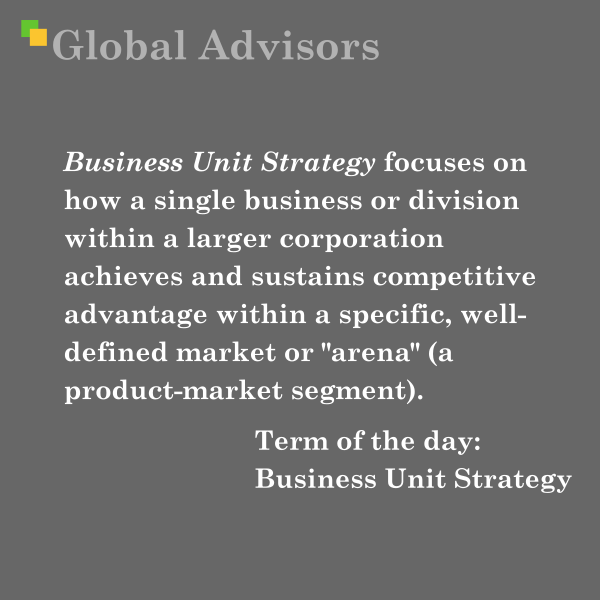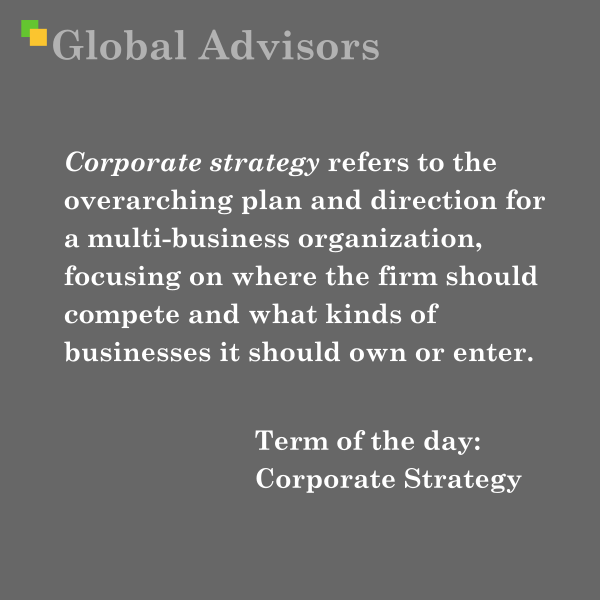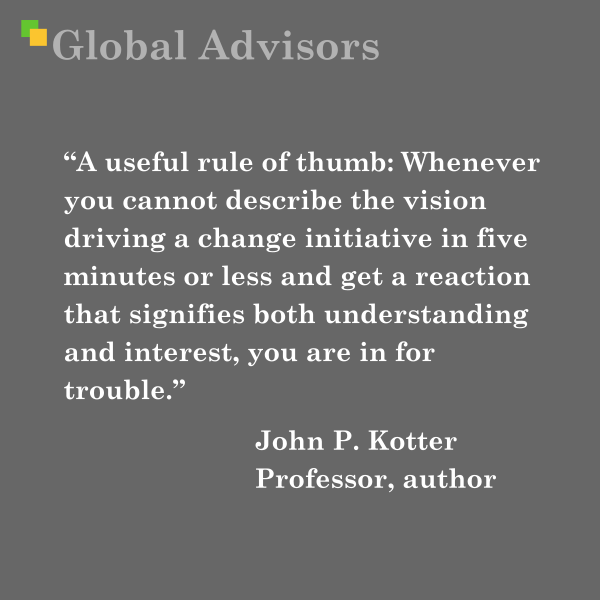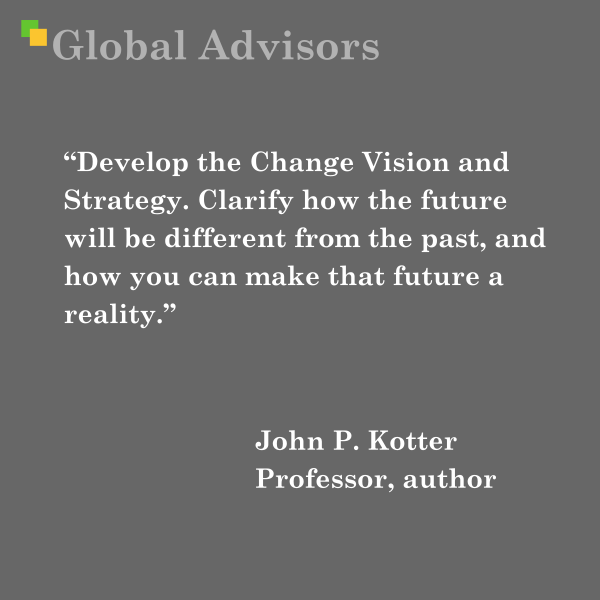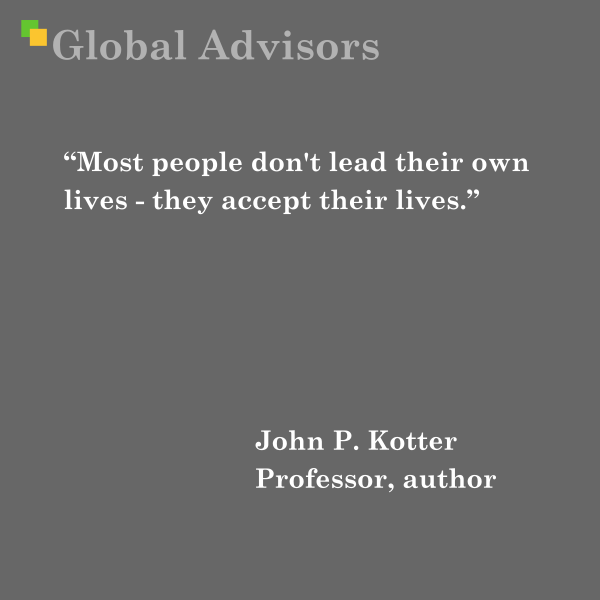| |
|
| |
| |
| |
|
Our selection of the top business news sources on the web. |
| |
| |
| |
Quote: Richard Koch Author, investor, strategist“Why is growth important? Because the power of compound arithmetic is such that, in a high-growth venture, sales - and profits, when they appear - will multiply quickly. It is quite different from the great majority of firms, which grow only slowly, and where profit growth is difficult and far from automatic.” - Richard Koch - Author, investor, strategistRichard Koch is a highly regarded British management consultant, entrepreneur, and author best known for his work on business strategy and the principle of exponential growth. Educated at Oxford University and the Wharton School, Koch began his career at the Boston Consulting Group and later became a partner at Bain & Company before co-founding the influential consultancy L.E.K. Consulting. As an investor, he has played a significant role in the success of several well-known companies, including Filofax, Plymouth Gin, Betfair, FanDuel, and Auto1. Koch is also celebrated for his bestselling book, The 80/20 Principle, which has sold over a million copies worldwide and introduced a broader audience to the idea that a small proportion of efforts often lead to the majority of results. The quote—“Why is growth important? Because the power of compound arithmetic is such that, in a high-growth venture, sales - and profits, when they appear - will multiply quickly. It is quite different from the great majority of firms, which grow only slowly, and where profit growth is difficult and far from automatic.”—captures the essence of Koch’s philosophy and expertise in business strategy. Context and BackstoryKoch has spent his career examining what propels some ventures to achieve extraordinary results while others stagnate. His work consistently points to the transformational power of rapid, compounded growth—a concept drawn from mathematics but observed powerfully in business. The principle of compound growth, as illustrated by both Koch and other thought leaders, describes exponential progress where gains in one period build upon the previous, leading to an accelerating trajectory rather than linear development. Koch contrasts this with the more common fate of most businesses: slow, incremental growth where every small gain must be arduously earned, and profitability is never a guarantee. This distinction is critical for entrepreneurs and strategists. High-growth ventures harness the “snowball effect” of compounding, where early momentum can quickly escalate into market dominance and substantial profit, often outstripping competitors who rely on traditional, slower-growth models. Koch’s decades of investing and consulting—backed by his direct involvement in rapidly scaling businesses—provide real-world evidence of this principle’s power. His insights encourage business leaders to view growth not merely as an aim, but as an essential, multiplying force that can radically alter outcomes if strategically pursued. In summary, Koch’s quote encapsulates the difference between ordinary and extraordinary business outcomes, emphasizing the necessity for leaders to understand and harness compound growth in their strategies. His career and writings offer both a theoretical foundation and practical guidance for those seeking to leverage this “hidden magic” in their own ventures.
|
| |
| |
Term: Business Unit StrategyBusiness Unit Strategy, as described by Richard Koch, focuses on how a single business or division within a larger corporation achieves and sustains competitive advantage within a specific, well-defined market or "arena" (a product-market segment). This level of strategy is about winning in one particular space, rather than deciding which spaces to play in. Key Elements of Business Unit Strategy (per Koch):
Business Unit vs. Corporate Strategy (per Koch):Richard Koch asserts that the heart of any firm is the product-market segment(s) where it holds or can hold a distinctive edge, whether through cost or uniqueness, and that “strategy” at this level is about defending and growing that advantage. In summary, business unit strategy is about how to compete and win within a chosen market, whereas corporate strategy is about deciding which markets or businesses to be in and optimizing the whole portfolio for maximum value. Koch’s work draws on the importance of focusing efforts—guided by the 80/20 principle—on those few arenas where success is most likely and most valuable.
|
| |
| |
Quote: Richard Koch Author, investor, strategist“The 80/20 Principle asserts that a minority of causes, inputs, or effort usually lead to a majority of the results, outputs, or rewards.” - Richard Koch - Author, investor, strategistThe quote, “The 80/20 Principle asserts that a minority of causes, inputs, or effort usually lead to a majority of the results, outputs, or rewards,” originates from the acclaimed British author, entrepreneur, and strategist Richard Koch. This principle, also widely known as the Pareto Principle, suggests that in many aspects of business and life, a focused minority is responsible for producing the majority of results. In practical terms, Koch observed that 20% of activities typically lead to 80% of the value or outcomes—whether those are profits, happiness, or productivity. Koch’s sharp insight into this pattern did not emerge in isolation. He built his career in environments where optimizing results and leveraging limited resources was essential. After earning an M.A. from Oxford University and an M.B.A. from The Wharton School, Koch launched his professional journey with the Boston Consulting Group, before becoming a partner at Bain & Company. There, consulting for leading global organizations, he recognized that the most significant outcomes often stemmed from a narrow selection of strategic moves or high-leverage initiatives. Leaving Bain in 1983, Koch co-founded L.E.K. Consulting and became a serial investor and entrepreneur, with ownership in businesses such as Filofax, Plymouth Gin, Betfair, and FanDuel. Across these varied ventures, Koch repeatedly saw the 80/20 rule in action—whether identifying the most profitable customers, streamlining operations, or focusing on the few core products that drove sales. About Richard KochRichard Koch (born July 28, 1950) has become a globally recognized voice on strategy, entrepreneurship, and the science of effectiveness. Beyond his consulting work and private equity investments, Koch has authored several influential books, most notably The 80/20 Principle, which has sold over a million copies and been translated into 35 languages. His writing popularized the application of the Pareto Principle beyond economics, demonstrating its practical relevance for business, personal development, and lifestyle choices. Koch’s personal journey reflects the core lesson of his message: by identifying the vital few factors that matter most, and minimizing time on the trivial many, individuals and organizations can multiply their effectiveness and reward. He has credited his mastery of this principle as the key to amassing significant wealth and achieving a form of early retirement, allowing him the freedom to invest, write, and speak across the world. Today, Koch’s 80/20 Principle stands not just as a tool for efficiency but as a transformative lens for reimagining how we approach challenges, prioritize resources, and strive for lasting success.
|
| |
| |
Term: Corporate StrategyCorporate strategy, as outlined by Richard Koch, refers to the overarching plan and direction for a multi-business organization, focusing on where the firm should compete and what kinds of businesses it should own or enter. This type of strategy is concerned with the selection and management of a portfolio of business units, industries, or product-market segments, and the allocation of resources among them. Koch emphasizes that corporate strategy is about understanding and choosing the arenas in which a firm operates, especially in cases where multiple distinct business areas are involved. Related theorist: Richard Koch
Corporate strategy asks questions such as:
It focuses on creating value through synergies, developing core competencies shared across units, and ensuring that the whole organization delivers more value than the sum of its parts. Business Unit Strategy vs. Corporate Strategy (as per Koch)Koch stresses that, at the business unit level, strategy centers on achieving competitive advantage within a specific product-market segment or arena—by either being the lowest-cost producer or by offering a product that is markedly more attractive to customers than competitors’ offerings. In contrast, corporate strategy is about identifying and managing the “few arenas” (businesses) that generate the most value, and ensuring they work together to deliver superior results for the corporation as a whole.
In summary, corporate strategy is about the selection and management of a portfolio of businesses to create overall value, whereas business unit strategy is about achieving and sustaining competitive advantage in a chosen market or segment. Koch’s distinction makes it clear: corporate strategy sets the direction for the whole enterprise; business unit strategy wins the battle in each chosen arena.
|
| |
| |
Quote: John P. Kotter - Professor, author“A useful rule of thumb: Whenever you cannot describe the vision driving a change initiative in five minutes or less and get a reaction that signifies both understanding and interest, you are in for trouble.” - John P. Kotter - Professor, authorJohn P. Kotter’s observation—“A useful rule of thumb: Whenever you cannot describe the vision driving a change initiative in five minutes or less and get a reaction that signifies both understanding and interest, you are in for trouble.”—emerges from decades of rigorous research into the mechanics of organizational transformation and leadership. The quote distills a critical insight at the heart of Kotter’s renowned work on change management: successful change initiatives hinge on the clarity and communicability of their vision. Drawing upon his extensive study of over 100 organizations undergoing transformation, Kotter discovered that even the most technically sound change efforts falter when the vision behind them is vague, convoluted, or fails to energize those involved. This realization became a cornerstone of his influential framework, emphasizing that a vision must not only provide direction but must also be articulated succinctly—capturing both understanding and enthusiasm from stakeholders in minutes, not hours. The context for this rule of thumb is rooted in Kotter’s widely adopted “8-Step Process for Leading Change,” first introduced in his 1996 book, Leading Change. In this step-by-step model, the third and fourth steps—form a strategic vision and communicate the vision—underscore the necessity of crafting a compelling narrative for change and ensuring that it resonates organization-wide. Kotter’s research established that if people cannot quickly grasp and feel inspired by the vision, skepticism and resistance are likely to follow, undermining the entire transformation effort. About John P. KotterJohn P. Kotter is a distinguished professor, author, and pioneer in the field of organizational change. As a long-standing Harvard Business School professor, Kotter has spent his career analyzing what distinguishes successful transformation from failure. His groundbreaking 8-step change model, developed in the mid-1990s, remains one of the most influential frameworks in business strategy and leadership circles worldwide. Kotter’s work emphasizes that enduring change is as much about human dynamics and communication as it is about strategic planning. He is recognized for distilling complex organizational theories into actionable advice, with a particular focus on the importance of urgency, coalition-building, and the communicability of vision. Contextual InsightsKotter’s insight is especially relevant in today’s rapidly evolving business landscape, where organizations face constant social, technological, and economic pressures to adapt. His rule serves as both a warning and a guide: If leaders cannot convey the purpose and promise of change in a way that is easily understood and genuinely exciting, it is likely that confusion and inertia will hinder progress. This quote encapsulates the wisdom that visionary leadership demands not just an inspiring destination, but a message so clear that it can be shared, understood, and embraced across every level of an organization—swiftly and memorably.
|
| |
| |
Term: Change LeadershipChange leadership is the process of driving transformational change by setting direction, building momentum, and inspiring people to achieve a shared vision. In Kotter’s framework, change leadership focuses on the emotional and behavioral aspects of change: motivating people, creating a compelling sense of urgency, aligning stakeholders around a strategic vision, and building the commitment necessary for long-term organizational transformation. Change leadership is proactive and visionary, seeking to shape organizational culture and inspire people to move beyond the status quo. Related theorist: John P. Kotter
Kotter’s 8-Step Process for Leading Change embodies this approach, emphasizing steps such as:
This process requires leaders to guide, motivate, and equip people to embrace and realize the change, making it a leadership-driven, holistic journey. Change Management (in contrast): Change management, by comparison, involves the systematic planning, implementation, and monitoring of specific change initiatives within an organization. It is more operational, focusing on process, procedures, and minimizing disruption. Change management covers the coordination of tasks, resource allocation, risk mitigation, and communication to ensure the smooth technical execution of change. Key Differences Summarized: Kotter's Perspective: Kotter stresses that change leadership is the engine for lasting change—without it, organizations often struggle to move beyond incremental improvements or sustain change over the long term. Strong change leadership is necessary to win hearts and minds, align actions with a bold vision, and anchor new behaviors in the organization’s culture. In Kotter’s view, while change management is necessary for handling logistics, only change leadership can transform an organization for the future.
|
| |
| |
Quote: John P. Kotter - Professor, author“Develop the Change Vision and Strategy. Clarify how the future will be different from the past, and how you can make that future a reality.” - John P. Kotter - Professor, authorThe quote “Develop the Change Vision and Strategy. Clarify how the future will be different from the past, and how you can make that future a reality.” by John P. Kotter encapsulates a critical principle in leading transformation within organizations. This insight is deeply rooted in Kotter's groundbreaking work on organizational change, particularly as articulated in his influential 8-Step Change Model. In the early 1990s, Kotter, a professor at Harvard Business School, conducted extensive research across more than 100 organizations undergoing major transitions. Through this research, he observed recurring patterns in both successful and failed transformation efforts. Kotter distilled these findings into his seminal 8-step process, outlined in his widely acclaimed book, Leading Change (1996). Central to this model is the necessity of crafting a clear and compelling change vision and a practical strategy to achieve it. According to Kotter, after establishing a sense of urgency and assembling a guiding coalition, leaders must articulate a vision that vividly contrasts the future state from the current reality. Equally important is clarifying the strategies that will turn this vision into concrete results. Without this clarity, organizations risk losing alignment and momentum, leaving change initiatives vulnerable to confusion and resistance from within. Kotter’s approach underscores that effective change cannot rely solely on top-down mandates or external pressures. Instead, it is about engaging people at every level, fostering understanding of the purpose behind the change, and painting a vivid picture of the benefits and pathway forward. This vision-driven strategy not only unifies teams but also motivates sustained action, making large-scale transformation achievable even in complex and turbulent environments. About John P. KotterJohn P. Kotter is recognized globally as one of the foremost authorities on leadership and change. A long-standing professor at Harvard Business School, he has authored several best-selling books, including Leading Change, which has become a foundational text in the field of change management. Kotter’s contributions are not confined to theory—his research has influenced leaders and organizations worldwide, guiding the implementation of sustainable change. Through his 8-Step Change Model, Kotter reshaped how businesses approach transformation, emphasizing the human side of change as much as the procedural and structural aspects. His model is celebrated for its practical application, clear structure, and lasting impact, making it a go-to framework for organizations navigating moments of critical transition. In the face of rapid technological, social, and economic shifts, Kotter’s enduring message is that visionary leadership and a well-communicated strategy are indispensable for organizations striving not just to adapt but to thrive.
|
| |
| |
Term: VisionA corporate vision is a statement describing the desired future state of an organization. It articulates where the company aspires to be in the long term, usually over a period of 3 to 10 years, in terms of impact, scale, and key achievements. The vision provides a forward-looking, ambitious goal that inspires and aligns stakeholders, guiding both strategic planning and resource allocation. Related Theorist Gary Hamel
Gary Hamel is widely recognized as the leading strategy theorist associated with the concept of corporate vision. Alongside C.K. Prahalad, Hamel introduced the importance of “strategic intent”—a precursor to modern corporate vision—emphasizing how a compelling future ambition can energize organizations and guide long-term strategy. Their work underscores the idea that a clear, aspirational vision is not just inspirational, but central to driving long-term competitive advantage and organizational alignment.
Key characteristics of an effective corporate vision:
For example, Microsoft’s vision statement is, "to empower every person and every organization on the planet to achieve more." This statement is forward-looking and reflects the company’s broad ambition and values. Vision vs. Mission vs. PurposeKey Contrasts:
Summary:
|
| |
| |
Quote: John P. Kotter - Professor, author“This iceberg is not who we are. It is only where we now live.” - John P. Kotter - Professor, authorThis quote originates from John P. Kotter’s influential fable, Our Iceberg Is Melting: Changing and Succeeding Under Any Conditions, co-authored with Holger Rathgeber. Set in the frozen expanse of Antarctica, the story follows a colony of penguins confronted with a daunting realization: their iceberg home is melting. As they struggle to face this existential threat, the colony must overcome resistance to change, tackle denial, and forge a path forward together. The line, “This iceberg is not who we are. It is only where we now live,” encapsulates a pivotal theme of the book. Spoken during a dramatic meeting among the penguins, the message is clear: identity is not tied to current circumstances. The iceberg symbolizes comfort zones, established routines, or the familiar structures organizations or individuals cling to, especially when confronted by uncertainty or crises. Kotter’s insight is that circumstances—however urgent or threatening—do not define one’s core values, purpose, or collective identity. By distinguishing between “who we are” and “where we live,” Kotter urges audiences to separate the essence of their identity from temporary conditions, laying the groundwork for adaptability and resilience in the face of necessary change. Our Iceberg Is Melting itself is a parable designed to distill and illustrate Kotter’s renowned Eight Step Process for Leading Change. Through the narrative of the penguins, Kotter conveys how successful adaptation—whether in organizations or communities—relies on assembling the courage to accept uncomfortable truths, mobilize around a shared vision, and act collectively, rather than retreating into denial or nostalgia. About John P. KotterJohn P. Kotter is a preeminent authority on leadership and change management. As a professor at Harvard Business School, Kotter has spent decades researching how leaders successfully navigate major transformations within organizations. He is the author of numerous award-winning books, including Leading Change, which introduced his influential Eight Step Process, and Our Iceberg Is Melting, which brings those concepts to life in a memorable, accessible way. Kotter’s work has shaped the practice of organizational change around the world. His emphasis on the need for urgency, clear vision, inclusive leadership teams, and systematic action provides a roadmap for leaders seeking to inspire adaptability and resilience in times of disruption. By blending rigorous research with the engaging storytelling found in Our Iceberg Is Melting, Kotter has helped countless leaders and teams confront challenges, recognizing that—no matter the “iceberg” they inhabit—their identity and potential transcend present circumstances
|
| |
| |
Term: Strategic Fit"Strategic Fit" refers to the alignment between an organization's internal capabilities (resources, structure, and processes) and the external environment (market demands, competition, and industry trends). Achieving strategic fit ensures that a company can effectively execute its strategy by leveraging its strengths to capitalize on opportunities and mitigate threats. Related Theorist: Henry Mintzberg The concept of “Strategic Fit” sits at the heart of effective business strategy, yet its significance has deep roots in the evolving landscape of management thought. In the mid-20th century, as organizations grew more complex and global, leaders recognized that simply having a strategy was not enough—what mattered was how well a company’s internal strengths aligned with external market realities. As strategic management matured, early approaches favored rigorous planning and analysis, treating strategy as a linear exercise: survey the environment, select your objectives, and systematically deploy resources. However, as thinkers like Henry Mintzberg observed, such structured approaches often fell short when faced with the unpredictable and dynamic nature of real-world markets. Mintzberg, known for his influential work on strategy and organizational design, challenged the prevailing orthodoxy. He argued that successful strategies do not emerge from rigid plans but rather from a synthesis of deliberate intent and emergent, adaptive learning. In his view, “Strategic Fit” is not a static achievement but a continuous process of aligning an organization’s resources, structures, and processes with changing market demands, competitive pressures, and broader industry trends. Mintzberg’s research into organizational forms—ranging from the entrepreneurial “personal enterprise” to the decentralized “project organization”—demonstrated that there is no one-size-fits-all structure. Instead, organizations must adapt, blending vision with learning and analysis with intuition, always seeking a fit between what they do well and what the world requires. His famous “5 Ps of Strategy” and work on emergent strategy highlight the creative, often non-linear interplay between an organization’s internal realities and its external environment. Today, “Strategic Fit” remains a guiding principle for organizations navigating complexity. Its roots in Mintzberg’s work remind us that true strategic advantage lies not just in having a plan, but in mastering the ongoing, dynamic alignment between inside capabilities and outside demands. By continuously seeking strategic fit, organizations maintain their relevance, resilience, and capacity for sustained success across ever-shifting global landscapes
|
| |
| |
|
| |
| |


